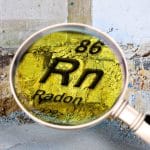 The science of addiction is one of the fastest growing areas in the scientific community. It is a fascinating field that has made important strides in the ways that we understand the way the brain works. It is in the center of the brain’s reward center that scientists have uncovered major parts of the puzzle into what cause addiction.
The science of addiction is one of the fastest growing areas in the scientific community. It is a fascinating field that has made important strides in the ways that we understand the way the brain works. It is in the center of the brain’s reward center that scientists have uncovered major parts of the puzzle into what cause addiction.
Nucleus Accumbens
This is not a term that many people have heard of, but this is the center of the brain’s pleasure pathways. Located just underneath the two cerebral hemispheres of the brain, the nucleus accumbens is a cluster of nerve cells that gives people the feeling of pleasure. Whenever a human being, or any other animal for that matter, performs an action that fulfills a desire or need, dopamine floods the nucleus accumbens.
Reward Pathway
Dopamine is the neurotransmitter that leads to a pleasurable feeling. When it is released into the nucleus accumbens, it creates a so-called “reward pathway” in the brain. The human or animal’s brain that is rewarded with dopamine records a memory of the action that resulted in the dopamine reward. This is a survival mechanism that ensures that we can evolve. When we are rewarded for an action that helps increase our chances of survival, then we are likely to repeat it. This increases the chances of survival and helps species to evolve.
The Problem
For the vast majority of the history of the planet, the reward pathway has been a good thing. The problem has come with the development of mankind. Once human beings evolved past the point of having to struggle to survive, many other activities were created to take the place of the ones that were needed for survival. These activities have created a shortcut to stimulating the reward pathways. Instead of having to struggle to find food to survive, humans can now stimulate the reward pathways repeatedly in a very short amount of time. The repeated stimulation of the pathways leads to ever-diminishing returns. This in turn leads to the need for more of the activity that stimulates the reward pathway.
The Spiral of Addiction
The need to keep stimulating a reward pathway with more and more of the activity is the very definition of addiction. It is a cycle that is hard to break, because the brain fights back against addiction by turning off receptors in the nucleus accumbens that are able to absorb dopamine. This leads to a greater use of the drug or activity that stimulates the reward pathway, which in turn leads to more of the dopamine receptors being turned off.
The Brain Remembers
The reason that people are addicts for life is that the brain always remembers the pleasurable activities that create reward pathways. Whenever human experience stress the nucleus accumbens sends signals to the brain’s memory centers to stimulate the memories of past activities that stimulate the reward pathways. This is why so many addicts relapse when they experience stress in their lives.
Peter Wendt writes and researches about addiction from his home in Austin, TX. His expertise stems from a stay at Origins Recovery Centers in Texas, and he recommends it highly.















